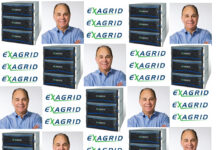HAMR and MAMR disk drives could be delayed until 2022 with 10-platter, 20TB conventionally recorded drives coming in 2021.
Trendfocus, a research firm specialising in data storage, suggests the launch of conventional technology in 18TB capacities in the second half of 2020 could delay the adoption of shingled magnetic recording (SMR) until later in 2020. Such SMR drives would have a 20TB capacity.
Trendfocus said SMR nearline volumes remain low, Wells Fargo senior analyst Aaron Rakers wrote in an October 4 report to subscribers. Vendors must sort out their host-managed schemes to better meet performance requirements before large-scale adoption takes place, according to Trendfocus.
In turn this could shift HAMR/MAMR adoption to 2022.
In the meantime disk manufacturers could add capacity by bringing 10-platter drives to market. An 18TB nine-platter drive would then become a 20TB 10-platter product, assuming no increase in areal density. All HDD manufacturers continue to assess back-up plans for such 10-platter disk drives, Trendfocus said. That would imply they would arrive in 2021.
Spinning platters
Conventional disk drives use perpendicular magnetic recording technology. There is a limit to their areal density, and hence capacity. This is caused by increasing recorded bit state unreliability. As the bit areas become smaller, with areal densities beyond 1,200Gb/sq in, binary value becomes harder and harder to read, and can reverse.
Seagate and Western Digital have turned to alternative technologies to increase capacity beyond this limit.
Seagate’s HAMR (Heat-Assisted Magnetic Recording) HDDs and WD’s MAMR (Microwave-Assisted Magnetic Recording) and HDDs are classed as nearline drives, and rotate at 7,200rpm. They are filled with helium to allow thinner and more platters than air-filled disks – helium resistance is lower than air.
Seagate and Western Digital are currently making nine-platter drives. WD’s DC H550 tops out at 18TB and the SMR DC H650 reaches 20TB. They use some aspects of WD’s MAMR technology but are not full MAMR drives.
Seagate’s Exos X16 is a 16TB, nine-platter conventionally recorded drive with 1,000Gb/sq in area density. The company expects to introduce 18TB conventional HAMR drives and 20TB SMR HAMR drives with production ramping in the first half of 2020, both with nine platters.








